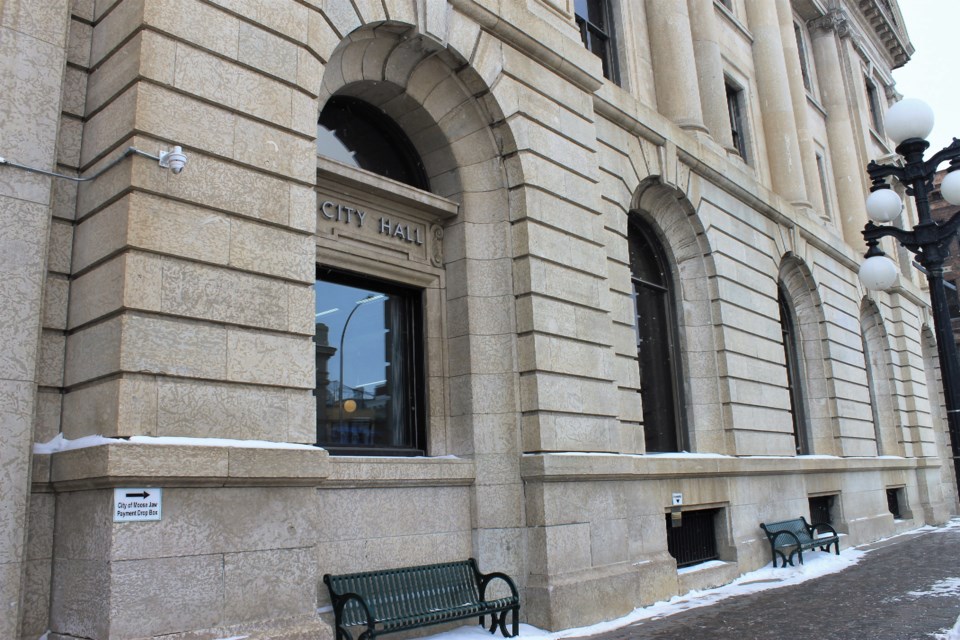The City of Moose Jaw will borrow $23 million during the next four years to meet all of its planned financial commitments and projects in the water and wastewater utility department.
City administration expects to borrow $10 million next year to complete the high-service reservoir pumphouse and $13 million in 2024 since the capital demands on the utility are significant and are “providing an extreme funding challenge” for that area, the 2021 budget document explained.
In particular, the water and wastewater utility reserve is facing a deficit of $11.6 million next year, $17.3 million in 2022, $18.6 million in 2023, $1.5 million in 2024, and a surplus of $487,695 in 2025.
Administration hopes to receive federal or provincial funding for its water and wastewater projects in the future, but neither level of government has ever given such money to Moose Jaw for its water-related projects, finance director Brian Acker said during a budget deliberation meeting.
“If that does materialize, it would alleviate or eliminate that need for borrowing in 2024,” he added.
The water and wastewater utility has $117.39 million in planned spending during the next five years. The Buffalo Pound Water Treatment Plant (BPWTP) will also be renewed, with Moose Jaw responsible for 26 per cent of the project.
City administration has planned for $90.6 million in infrastructure projects for the water utility during the next five years, including:
- Water distribution network: $2 million
- Reservoirs: $17.2 million
- BPWTP contribution: $1.5 million
- Feeder mains: $7.2 million
- BPWTP transmission line upgrades: $4.5 million
- Cast iron water main replacement: $38.8 million
- Legal costs: $125,000
- Loan repayments: $19.2 million
In the wastewater utility, $26.7 million worth of projects are planned during the next five years:
- Sanitary sewers: $7.5 million
- Wastewater treatment plant: $3.1 million
- Lift stations: $12.2 million
- Loan repayments: $3.7 million
City administration will also increase the infrastructure levy to $65 per taxable property in 2021 from $30 levied this year. The new levy is expected to generate $1.1 million to help fund the cast iron replacement program.
The goal is to increase that levy to $100 within the next couple of years.
The municipality is still short roughly $500,000 per year to help fund that project even with the levy increasing to $65 per taxable property, said Coun. Heather Eby. A referendum in 2016 eliminated the local improvement plan (LIP) funding model, so council has had four years to find alternate means of funding the cast iron water main replacement project.
“It is not a fun decision, but … we have to fund that program efficiently and effectively, otherwise it’s not being funded appropriately,” she added.
In total, city administration expects to spend roughly $119.3 million in 2021, based on requests of:
- $52.5 million for the general operating budget
- $18.3 million for new general capital budget spending
- $3 million for new equipment reserve budget spending
- $28 million for the utility operating budget
- $17.3 million for new utility capital budget spending
Operating budget overview
City administration expects to receive $51.3 million in operating budget revenue next year, which is an increase of $1.8 million — or 3.81 per cent — compared to this year, the budget document shows.
A one-time pandemic-related federal restart grant of $2.1 million is filling a large gap in the budget on the revenue side. Without that grant, the municipality would see revenues of $49.2 million.
Meanwhile, expenses are expected to be $52.5 million next year, which is an increase of $3.08 million — or 6.23 per cent — from this year.
The largest expense increase is for Mosaic Place, which will see expenses of $1.1 million next year compared to $526,347 this year. That represents an increase of $587,852, or 111.69 per cent.
Therefore, the projected deficit for 2021 is expected to be $1.19 million. Without the federal restart grant, that deficit would increase to $3.3 million. City administration did not say how it would cover the expected deficit.




